Cover
Title Page
Copyright Page
Preface
Acknowledgments
Contents
Chapter 0 Introduction
0.1 The Role of Algorithms
0.2 The History of Computing
0.3 The Science of Algorithms
0.4 Abstraction
0.5 An Outline of Our Study
0.6 Social Repercussions
Chapter 1 Data Storage
1.1 Bits and Their Storage
Boolean Operations
Gates and Flip-Flops
Hexadecimal Notation
1.2 Main Memory
Memory Organization
Measuring Memory Capacity
1.3 Mass Storage
Magnetic Systems
Optical Systems
Flash Drives
File Storage and Retrieval
1.4 Representing Information as Bit Patterns
Representing Text
Representing Numeric Values
Representing Images
Representing Sound
1.5 The Binary System
Binary Notation
Binary Addition
Fractions in Binary
1.6 Storing Integers
Two’s Complement Notation
Excess Notation
1.7 Storing Fractions
Floating-Point Notation
Truncation Errors
1.8 Data Compression
Generic Data Compression Techniques
Compressing Images
Compressing Audio and Video
1.9 Communication Errors
Parity Bits
Error-Correcting Codes
Chapter 2 Data Manipulation
2.1 Computer Architecture
CPU Basics
The Stored-Program Concept
2.2 Machine Language
The Instruction Repertoire
An Illustrative Machine Language
2.3 Program Execution
An Example of Program Execution
Programs Versus Data
2.4 Arithmetic/Logic Instructions
Logic Operations
Rotation and Shift Operations
Arithmetic Operations
2.5 Communicating with Other Devices
The Role of Controllers
Direct Memory Access
Handshaking
Popular Communication Media
Communication Rates
2.6 Other Architectures
Pipelining
Multiprocessor Machines
Chapter 3 Operating Systems
3.1 The History of Operating Systems
3.2 Operating System Architecture
A Software Survey
Components of an Operating System
Getting It Started
3.3 Coordinating the Machine’s Activities
The Concept of a Process
Process Administration
3.4 Handling Competition Among Processes
Semaphores
Deadlock
3.5 Security
Attacks from the Outside
Attacks from Within
Chapter 4 Networking and the Internet
4.1 Network Fundamentals
Network Classifications
Protocols
Combining Networks
Methods of Process Communication
Distributed Systems
4.2 The Internet
Internet Architecture
Internet Addressing
Internet Applications
4.3 The World Wide Web
Web Implementation
HTML
XML
Client-Side and Server-Side Activities
4.4 Internet Protocols
The Layered Approach to Internet Software
The TCP/IP Protocol Suite
4.5 Security
Forms of Attack
Protection and Cures
Encryption
Legal Approaches to Network Security
Chapter 5 Algorithms
5.1 The Concept of an Algorithm
An Informal Review
The Formal Definition of an Algorithm
The Abstract Nature of Algorithms
5.2 Algorithm Representation
Primitives
Pseudocode
5.3 Algorithm Discovery
The Art of Problem Solving
Getting a Foot in the Door
5.4 Iterative Structures
The Sequential Search Algorithm
Loop Control
The Insertion Sort Algorithm
5.5 Recursive Structures
The Binary Search Algorithm
Recursive Control
5.6 Efficiency and Correctness
Algorithm Efficiency
Software Verification
Chapter 6 Programming Languages
6.1 Historical Perspective
Early Generations
Machine Independence and Beyond
Programming Paradigms
6.2 Traditional Programming Concepts
Variables and Data Types
Data Structure
Constants and Literals
Assignment Statements
Control Statements
Comments
6.3 Procedural Units
Procedures
Parameters
Functions
6.4 Language Implementation
The Translation Process
Software Development Packages
6.5 Object-Oriented Programming
Classes and Objects
Constructors
Additional Features
6.6 Programming Concurrent Activities
6.7 Declarative Programming
Logical Deduction
Prolog
Chapter 7 Software Engineering
7.1 The Software Engineering Discipline
7.2 The Software Life Cycle
The Cycle as a Whole
The Traditional Development Phase
7.3 Software Engineering Methodologies
7.4 Modularity
Modular Implementation
Coupling
Cohesion
Information Hiding
Components
7.5 Tools of the Trade
Some Old Friends
Unified Modeling Language
Design Patterns
7.6 Quality Assurance
The Scope of Quality Assurance
Software Testing
7.7 Documentation
7.8 The Human-Machine Interface
7.9 Software Ownership and Liability
Chapter 8 Data Abstractions
8.1 Basic Data Structures
Arrays
Lists, Stacks, and Queues
Trees
8.2 Related Concepts
Abstraction Again
Static Versus Dynamic Structures
Pointers
8.3 Implementing Data Structures
Storing Arrays
Storing Lists
Storing Stacks and Queues
Storing Binary Trees
Manipulating Data Structures
8.4 A Short Case Study
8.5 Customized Data Types
User-Defined Data Types
Abstract Data Types
8.6 Classes and Objects
8.7 Pointers in Machine Language
Chapter 9 Database Systems
9.1 Database Fundamentals
The Significance of Database Systems
The Role of Schemas
Database Management Systems
Database Models
9.2 The Relational Model
Issues of Relational Design
Relational Operations
SQL
9.3 Object-Oriented Databases
9.4 Maintaining Database Integrity
The Commit/Rollback Protocol
Locking
9.5 Traditional File Structures
Sequential Files
Indexed Files
Hash Files
9.6 Data Mining
9.7 Social Impact of Database Technology
Chapter 10 Computer Graphics
10.1 The Scope of Computer Graphics
10.2 Overview of 3D Graphics
10.3 Modeling
Modeling Individual Objects
Modeling Entire Scenes
10.4 Rendering
Light-Surface Interaction
Clipping, Scan Conversion, and Hidden-Surface Removal
Shading
Rendering-Pipeline Hardware
10.5 Dealing with Global Lighting
Ray Tracing
Radiosity
10.6 Animation
Animation Basics
Kinematics and Dynamics
The Animation Process
Chapter 11 Artificial Intelligence
11.1 Intelligence and Machines
Intelligent Agents
Research Methodologies
The Turing Test
11.2 Perception
Understanding Images
Language Processing
11.3 Reasoning
Production Systems
Search Trees
Heuristics
11.4 Additional Areas of Research
Representing and Manipulating Knowledge
Learning
Genetic Algorithms
11.5 Artificial Neural Networks
Basic Properties
Training Artificial Neural Networks
Associative Memory
11.6 Robotics
11.7 Considering the Consequences
Chapter 12 Theory of Computation
12.1 Functions and Their Computation
12.2 Turing Machines
Turing Machine Fundamentals
The Church-Turing Thesis
12.3 Universal Programming Languages
The Bare Bones Language
Programming in Bare Bones
The Universality of Bare Bones
12.4 A Noncomputable Function
The Halting Problem
The Unsolvability of the Halting Problem
12.5 Complexity of Problems
Measuring a Problem’s Complexity
Polynomial Versus Nonpolynomial Problems
NP Problems
12.6 Public-Key Cryptography
Modular Notation
RSA Public-Key Cryptography
Appendixes
A: ASCII
B: Circuits to Manipulate Two’s Complement Representations
C: A Simple Machine Language
D: High-Level Programming Languages
E: The Equivalence of Iterative and Recursive Structures
F: Answers to Questions & Exercises
Index
A
B
C
D
E
F
G
H
I
J
K
L
M
N
O
P
Q
R
S
T
U
V
W
X
Y
Z



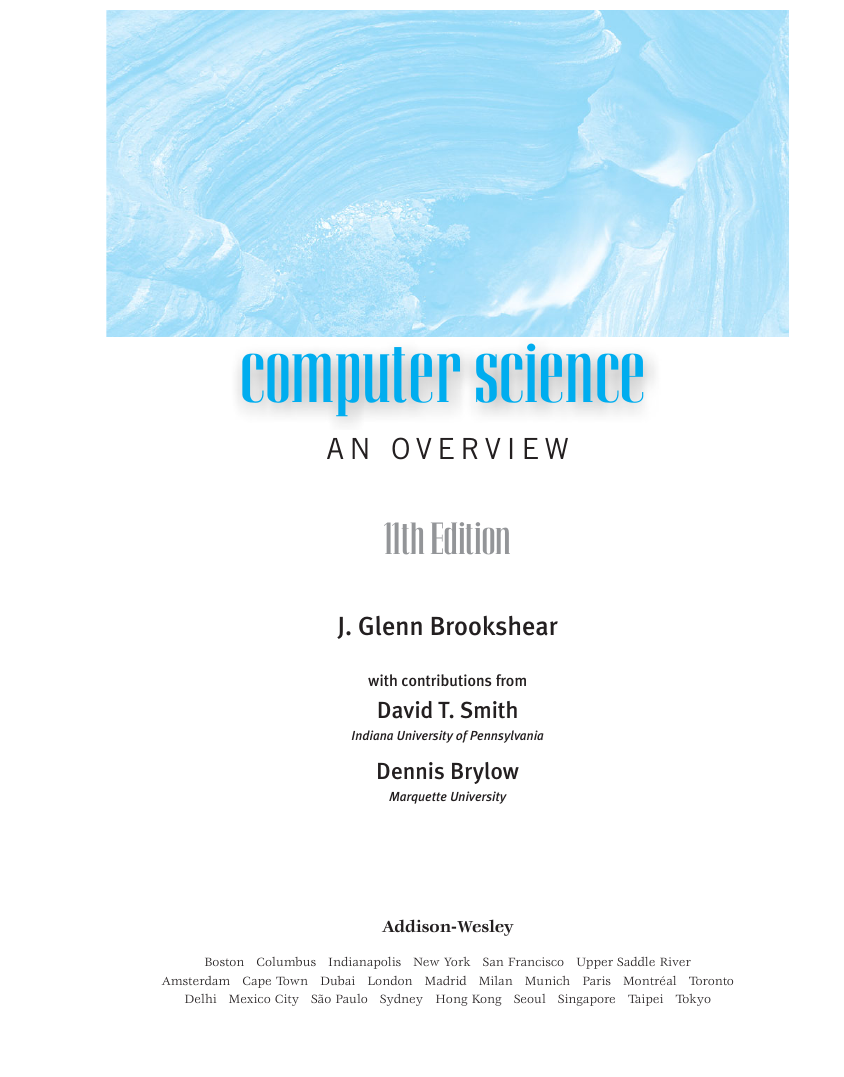
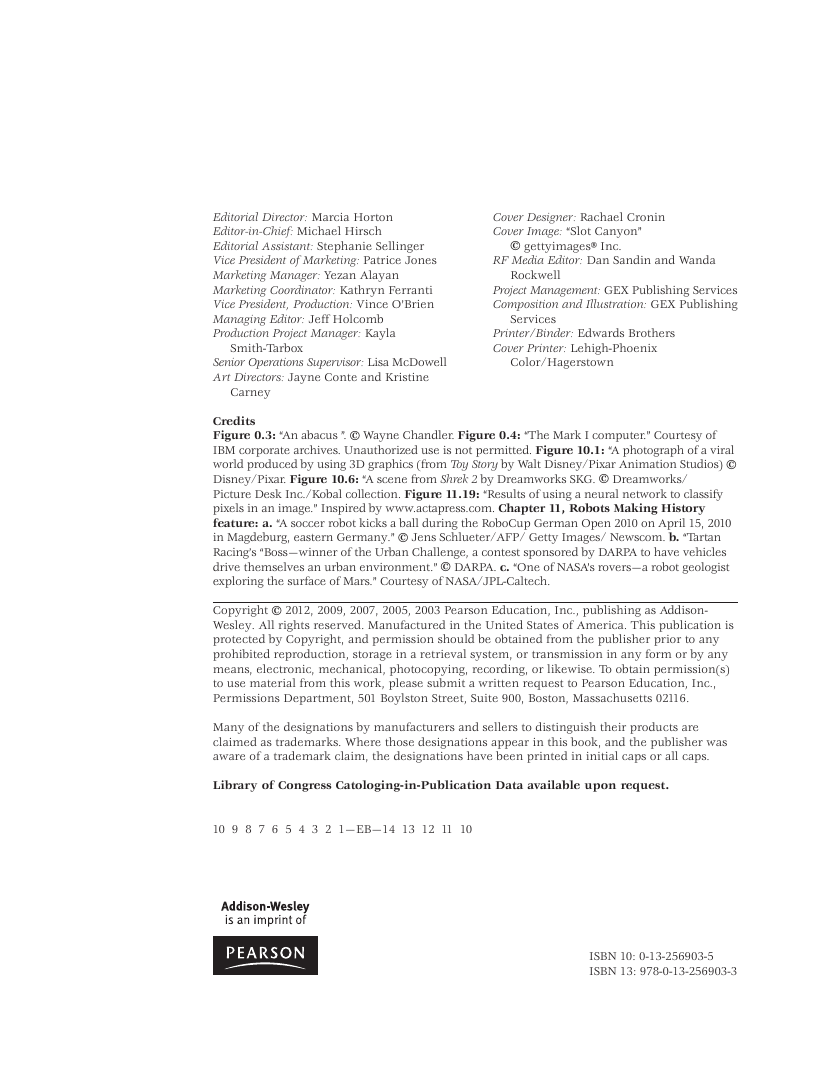
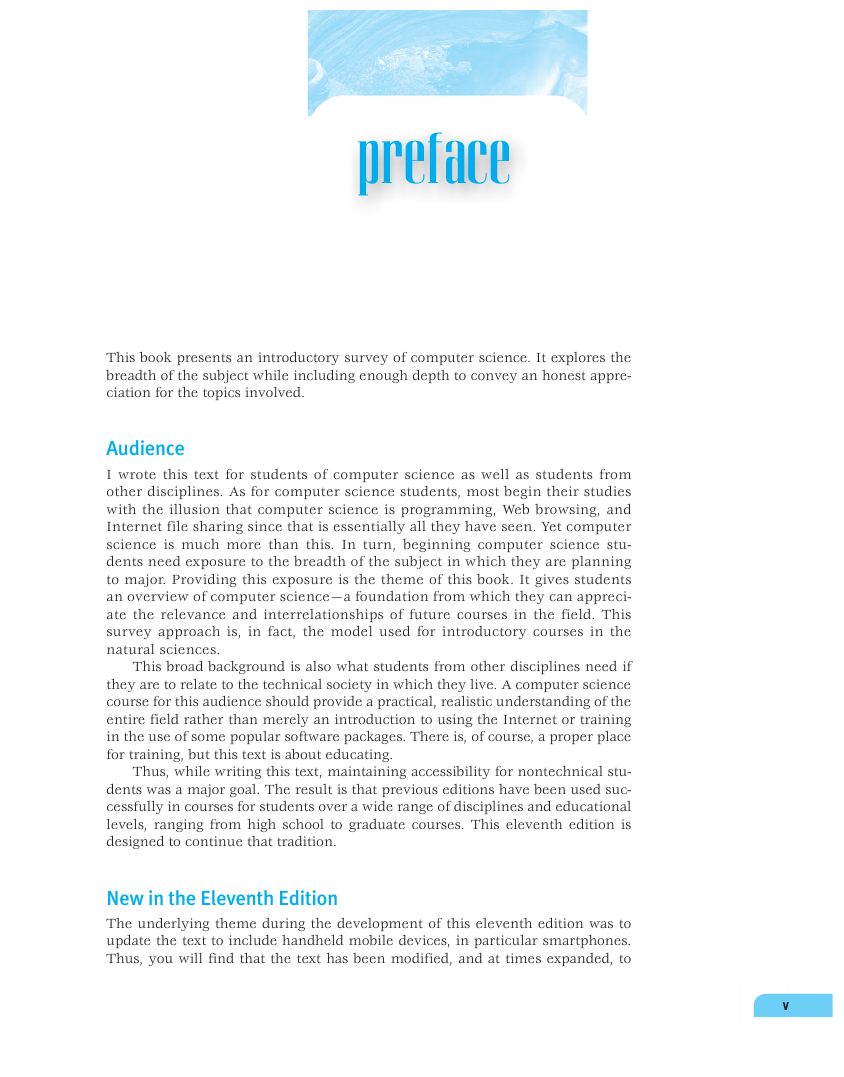
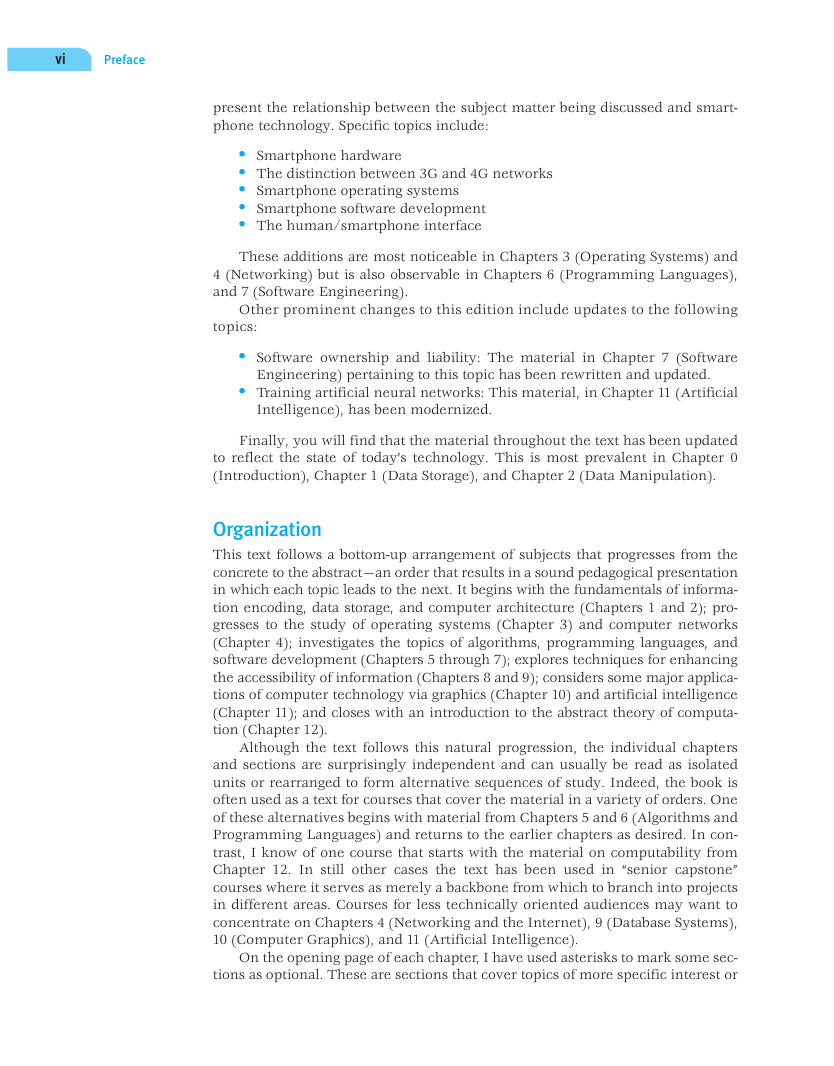
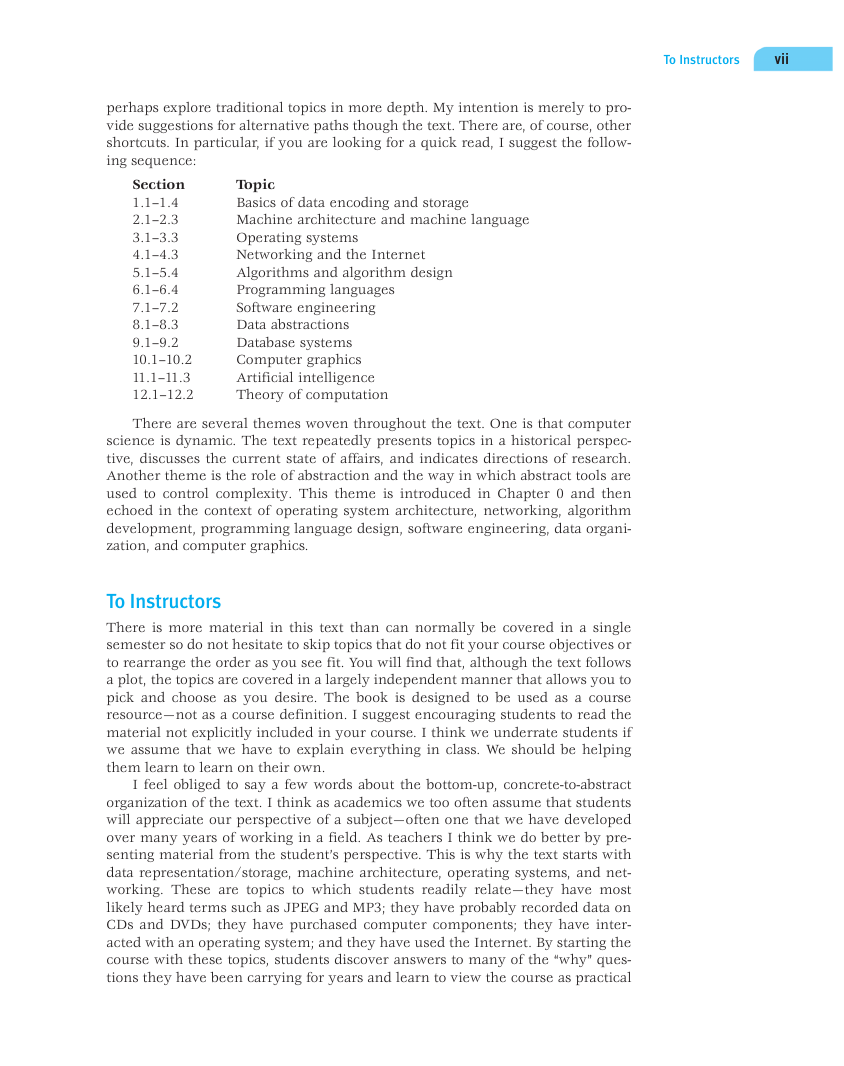








 2023年江西萍乡中考道德与法治真题及答案.doc
2023年江西萍乡中考道德与法治真题及答案.doc 2012年重庆南川中考生物真题及答案.doc
2012年重庆南川中考生物真题及答案.doc 2013年江西师范大学地理学综合及文艺理论基础考研真题.doc
2013年江西师范大学地理学综合及文艺理论基础考研真题.doc 2020年四川甘孜小升初语文真题及答案I卷.doc
2020年四川甘孜小升初语文真题及答案I卷.doc 2020年注册岩土工程师专业基础考试真题及答案.doc
2020年注册岩土工程师专业基础考试真题及答案.doc 2023-2024学年福建省厦门市九年级上学期数学月考试题及答案.doc
2023-2024学年福建省厦门市九年级上学期数学月考试题及答案.doc 2021-2022学年辽宁省沈阳市大东区九年级上学期语文期末试题及答案.doc
2021-2022学年辽宁省沈阳市大东区九年级上学期语文期末试题及答案.doc 2022-2023学年北京东城区初三第一学期物理期末试卷及答案.doc
2022-2023学年北京东城区初三第一学期物理期末试卷及答案.doc 2018上半年江西教师资格初中地理学科知识与教学能力真题及答案.doc
2018上半年江西教师资格初中地理学科知识与教学能力真题及答案.doc 2012年河北国家公务员申论考试真题及答案-省级.doc
2012年河北国家公务员申论考试真题及答案-省级.doc 2020-2021学年江苏省扬州市江都区邵樊片九年级上学期数学第一次质量检测试题及答案.doc
2020-2021学年江苏省扬州市江都区邵樊片九年级上学期数学第一次质量检测试题及答案.doc 2022下半年黑龙江教师资格证中学综合素质真题及答案.doc
2022下半年黑龙江教师资格证中学综合素质真题及答案.doc